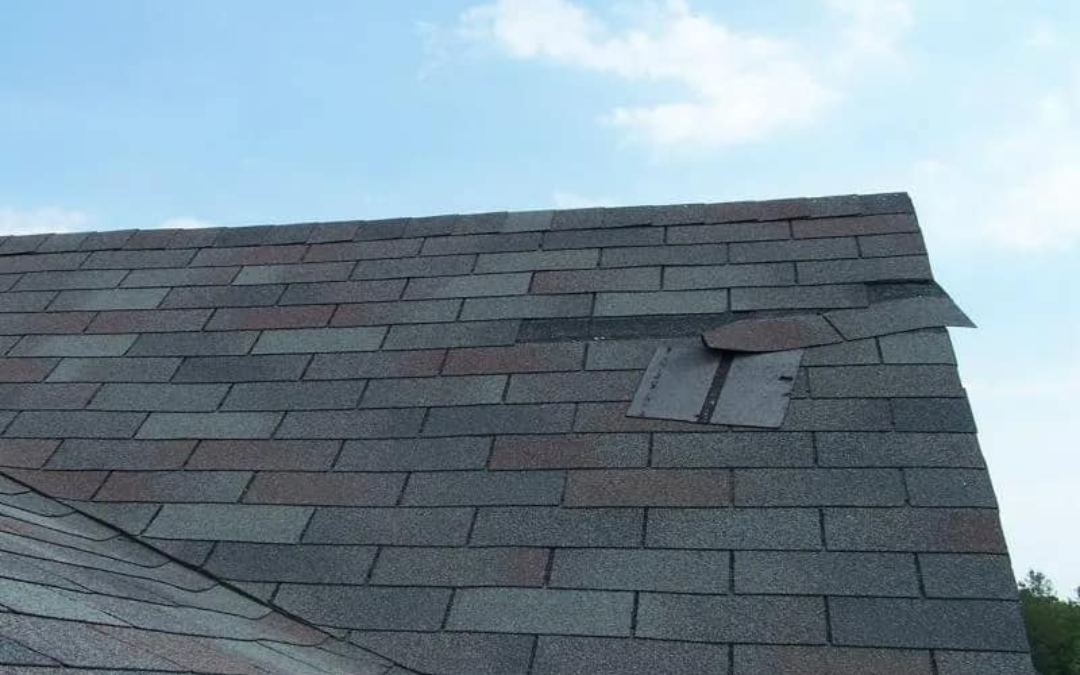Common Asphalt Shingle Roof Problems and How to Fix Them

What Are the Common Asphalt Shingle Roof Problems?
Asphalt shingles are a popular choice for homeowners due to their affordability, durability, and ease of installation. However, like any roofing material, they are susceptible to problems over time. Identifying and addressing these issues early on is key to avoiding more extensive (and expensive) repairs. In this blog, we’ll discuss common asphalt shingle roof problems and how to fix them, either through simple DIY methods or with the help of a professional roofer.
Cracked and Curling Shingles
One of the most common asphalt shingle problems is cracking and curling. Cracking can occur due to aging, sun exposure, or temperature fluctuations, while curling often results from improper installation, moisture buildup, or old age.
DIY Fix: If you notice a small number of shingles curling up, you can often fix them yourself by applying a roof adhesive underneath the shingle and pressing it flat. Similarly, cracked shingles can sometimes be repaired using roofing sealant to prevent further damage. However, these repairs are temporary fixes and will not solve the root of the problem.
When to Call a Pro: If a significant portion of your roof has cracked or curling shingles, or if the underlying cause is unclear, it’s best to call a professional. They can assess the damage and recommend whether a full shingle replacement is necessary.
Missing or Loose Shingles
Shingles can become loose or go missing altogether due to high winds, storms, or wear and tear. This exposes your roof to potential leaks and water damage.
DIY Fix: Replacing a few missing or loose shingles is a task many homeowners can handle. Purchase matching shingles from a local supplier, remove the damaged shingles, and nail the new ones in place. Just be sure to follow all safety precautions when working on your roof.
When to Call a Pro: If large sections of your roof are affected, or if you’re dealing with an older roof, professional help is advisable. Missing shingles may indicate underlying damage, such as compromised flashing or a failing underlayment, which requires more thorough repair.
Granule Loss
Over time, asphalt shingles shed their protective granules, especially after exposure to severe weather. You’ll often notice these granules in your gutters or on the ground. Granule loss makes shingles less effective at protecting your home from UV rays and water damage.
DIY Fix: Unfortunately, there’s no effective DIY solution for severe granule loss. If the shingles are relatively new, granule loss might just be a sign of initial wear. In this case, simply clean your gutters and monitor for additional issues.
When to Call a Pro: Excessive granule loss on an older roof is a sign that it’s reaching the end of its life. Call a professional roofer to assess whether repair or replacement is necessary.
Leaks and Water Damage
Leaky roofs are a major concern, especially if left untreated. Asphalt shingles can develop leaks from improper installation, damaged flashing, or age-related wear. Water damage often leads to rot, mold, and structural issues if not promptly addressed.
DIY Fix: For minor leaks, you may be able to patch the area temporarily using roof sealant or tape. First, locate the source of the leak and ensure that any nearby shingles are secure and undamaged. Applying sealant to the damaged area can provide a short-term solution.
When to Call a Pro: If the leak is widespread, you can’t locate the source, or water damage is already visible inside your home, it’s time to call a roofing professional. They can identify hidden issues and prevent further structural damage to your roof and home.
Blistering Shingles
Blistering occurs when moisture becomes trapped inside the shingle and heats up from the sun. Over time, this leads to bubbles forming on the shingle’s surface, which can eventually pop and cause holes.
DIY Fix: Minor blistering may not immediately require attention, but it’s important to keep an eye on these spots. Unfortunately, there’s no easy DIY fix for blistered shingles. Attempting to patch or seal them can make the problem worse.
When to Call a Pro: If blistering shingles start to crack or pop, it’s best to have a roofing professional inspect the roof. They can replace damaged shingles and check for any underlying moisture issues that need to be addressed.
Preventing Asphalt Shingle Problems
While it’s important to know how to fix these common issues, the best way to avoid them is through prevention. Regular roof inspections, proper installation, and routine maintenance are key to keeping your asphalt shingle roof in good shape.
DIY Prevention Tips:
-
- Clean your gutters regularly to prevent water buildup.
- Inspect your roof after storms to check for damage.
- Trim nearby trees to avoid branches falling on or scraping your roof.
- Address minor issues promptly to prevent them from worsening.
When to Call the Experts
Asphalt shingle roof problems can often be handled with DIY solutions, but it’s important to know when to call in the professionals. If you notice significant damage or if a problem persists after a DIY fix, it’s time to schedule an expert inspection.
Fix Asphalt Shingle Issues with Twin Peaks Roofing & Construction
While addressing common asphalt shingle roof problems can sometimes be handled with DIY solutions, it’s important to recognize when professional attention is required. At Twin Peaks Roofing & Construction, we offer comprehensive roofing services, from small repairs to full replacements, ensuring your roof is always in top condition.
Contact us today at (330) 608-6966 or (330) 906-0295, or email info@twinpeaksroofs.com for expert roof repair and inspection services. Our team is here to keep your roof secure, reliable, and ready to protect your home from the elements.
